 Download this article in magazine layout
Download this article in magazine layout
- Share this article
- Subscribe to our newsletter
Tackling pest-induced post-harvest loss under climate change
Post-harvest loss of grain (maize, rice, wheat) and pulses remains an important challenge, particularly in the tropics where it contributes to food insecurity and negatively affects supply chains. Causes of post-harvest loss are systemic and can be associated with biotic factors, but also with the lack of awareness by farmers and other stakeholders on the extent of the problem or the critical point of losses, bad post-harvest practices, lack of access to market and economic incentives, and the lack of access to appropriate post-harvest technologies.
Insect pests contributing to post-harvest loss
Insects are among the most important biotic factors of post-harvest loss, accounting for a significant part of storage loss (upwards of 60 per cent of total grain in some cases). Although hundreds of species of insects can infest grain, most damage is caused by a select few of them. For example, the maize weevil (Sitophilus zeamais) and the larger grain borer (Prostephanus truncates – LGB) have the heavier impact on maize during storage, while common beans are mostly affected by the bean weevil (Acanthoscelides obtectus) and the Mexican bean weevil (Zabrotes subfasciatus).
Some of the post-harvest insect pests of grains, and of stored commodities in general, are considered as so-called “quarantine pests”, i.e. they are not naturally present in an area and could create significant economic damage if introduced. For example, the LGB is such a quarantine pest, and is one of the most destructive insect pests of grain. Originally from Mexico and Central America, this pest was accidentally introduced in Africa, where it is now spread throughout the equatorial region. The LGB’s effectiveness in destroying harvests is associated with its varied diet: described as a wood borer, this pest can easily infest other crops, which makes it difficult to control. A typical sign of LGB infestation in a grain stock is the production of flour, which generally leads to the proliferation of other secondary insect pests and fungi. Controlling the LGB requires the implementation of an integrated management system (varietal resistance, good post-harvest practices, biological control, hermetic technologies) without systematically relying on the use of pesticides to avoid resistance development.
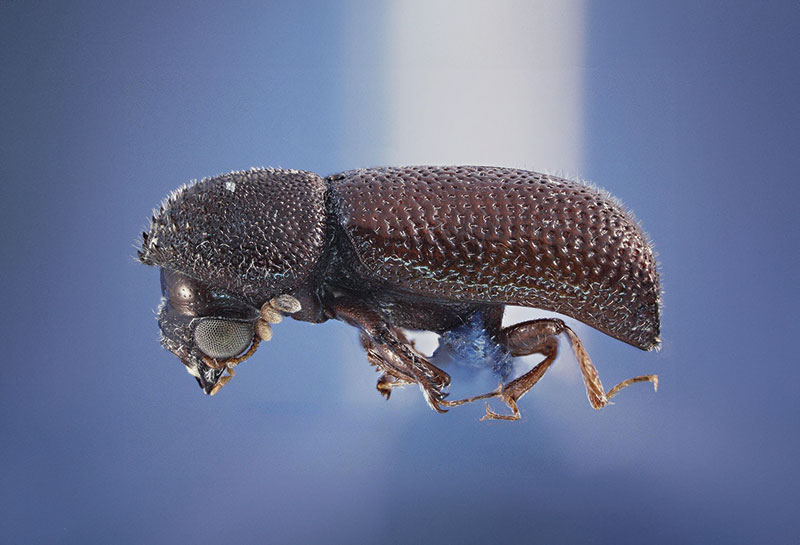
The larger grain borer (Prostephanus truncates). Photo: Pest and Diseases Image Library/ Bugwood.org
The khapra beetle (Trogoderma granarium) is another invasive pest. It was first identified in India and now has a quarantine status in many countries due to its capacity to quickly establish itself in newly infested areas and its ability to infest numerous commodities and survive in harsh environments with the help of diapause (a physiological state during which insects can decrease their metabolism, and sometimes pause their development, to survive harsh environmental conditions). Even though these post-harvest pests have been known and described for a while, they continue to cause a lot of damage, and their incidence could be heightened by climate change.
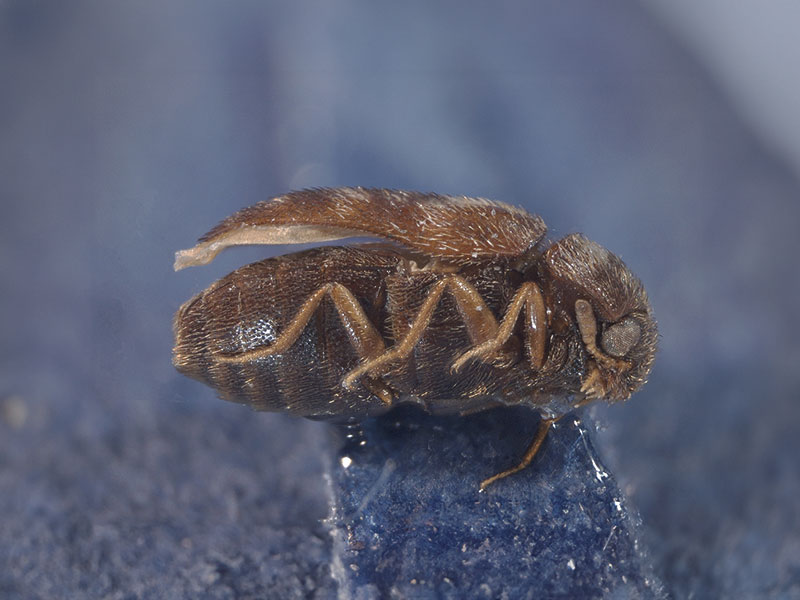
The khapra beetle (Trogoderma granarium). Photo: Pest and Diseases Image Library/ Bugwood.org
Climate change – an accelerating factor for the spread of post-harvest pests
Climate change impacts on agricultural production and mitigation strategies are not new to the global research and development agenda. Nevertheless, while the impact of climate change on crop loss and overall agricultural productivity is well investigated, data on global warming and the subsequent increase in temperature on post-harvest pests is insufficiently studied. Several scenarios can be considered regarding how climate change impacts on the physiology and the behaviour of insects. Elevated temperature may, for example, affect insects’ life cycle and accelerate their reproduction rate, resulting in more generations per year, higher population densities and greater crop damage. Moreover, warmer temperatures may lead to an expansion of the geographic range of insect pests, by allowing them to thrive in regions where colder temperatures are used to prevent their survival. This change in distribution area can be limited to one and the same country – it has been hypothesised that the confused flour beetle (Tribolium confusum), a pest that generally infests grain and flour in warehouses and silos, could shift habitats from northern to southern Chile, where it does not currently represent a risk – but could also expand beyond countries and regions’ boundaries due to international trade. Indeed, agricultural products account for a significant part of global trade, and insects can be transported along with grains across national borders. Many pests have the capacity to infest commodities over long distances and establish themselves in new areas. This is how the lesser grain borer (Rhyzopertha dominica), one of the major wheat pests originating from the Indian subcontinent, was found in Germany. The pest can also act as a forest pest in Europe.
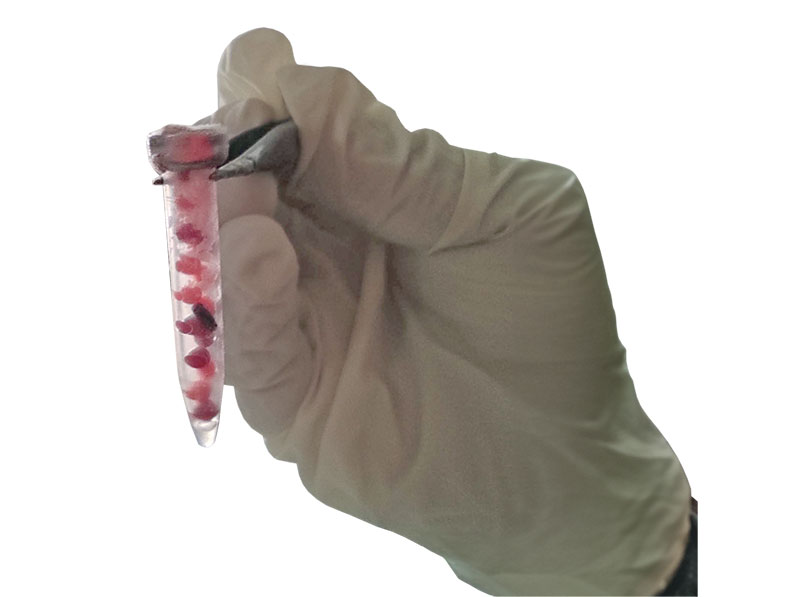
A larger grain borer chewing in a plastic pheromone lure, showing its destructive capacity. This insect is able to damage grain-packaging materials.
Photo: Jessica González Regalado/ CIMMYT
Managing post-harvest pests in the context of global warming
The risk of introducing invasive insects through global trade is not new and is generally managed through monitoring at entry points and the implementation of phytosanitary measures when an invasive pest is identified. However, climate change could have a negative impact on the effectiveness of the insect management tools currently available. For example, the effectiveness of diatomaceous earth (inert dusts), pyrethrins and most pyrethroids (insecticides) in controlling post-harvest insect pests decreases when temperature increases. Moreover, potential negative impacts of climate change on insects’ natural enemies like Beauveria bassiana – a fungus which parasitises insects – may also weaken the biological control of post-harvest pests. Therefore, mitigating the negative impacts of post-harvest pests on food grain in the context of climate change requires proactive measures adapted to each context and taking into account that small-scale farmers are particularly vulnerable. These control practices will need to combine chemical, cultural and biological (including the use of pheromones-based tools) methods for a comprehensive management of insect pests.
Monitoring is key in mitigating the projected negative impact
In addition to the development of new integrated post-harvest pest management strategies, it is essential to monitor the invasion pathways of post-harvest pests to allow an early detection and a swift assessment of the likelihood of their establishment in risk areas. The International Maize and Wheat Improvement Center (CIMMYT) and Kansas State University are, for example, partnering to monitor the invasion pathways of post-harvest pests in the Americas, including the larger grain borer and the khapra beetle. These experiments, which are also carried out in various parts of the world, include tracking pests in different areas (prairie, stores and warehouses) using pheromones traps but also examining the fungi communities associated with the collected insects.
Preliminary results show that a variety of fungus species are associated with the two insects, including fungi from the genera Aspergillus, Fusarium and Penicillium. These types of fungi develop during storage because the feeding activities of post-harvest pests increase the temperature and humidity in the storage ecosystem. These toxigenic fungal strains can then in turn produce mycotoxins such as aflatoxins and fumonisins, which are potentially carcinogenic and can cause a variety of health problems for humans and animals. Aspergillus flavus, one of the most important fungi vectors of aflatoxin, was identified and associated with both the larger grain borer and the maize weevil.
Fungi associated with post-harvest pests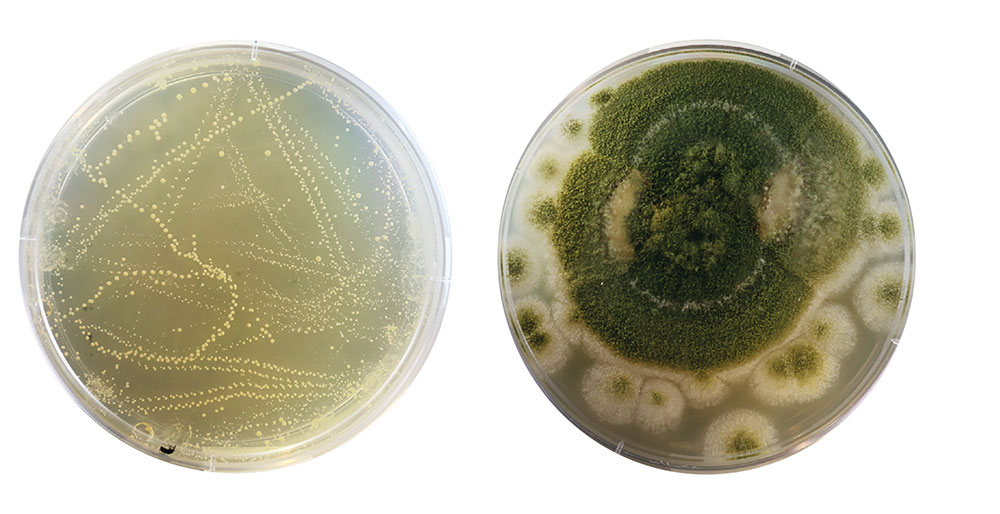
Photos: Hannah Quellhorst, Kansas State University
Monitoring programmes like this one will help in preventing significant damage caused by these pests. Thus, dealing with mycotoxins requires an integrated approach that includes the choice of varieties, soil health and agronomic and post-harvest practices.
Modelling studies such as the one by Cimmyt and Kansas State University can help predict the potential expansion of post-harvest pests under different climate change scenarios. These works generally include gathering information on the current distribution of the pest considered, physiological information, environmental conditions, host availability and other relevant factors. The validated models are used to generate risk areas and inform pest management strategies.
Understanding the pests’ pathways of invasion will help inform the development and implementation of risk management strategies to effectively prevent, detect and respond to invasive pest incursions. Currently, the lack of data at regional and continental levels poses a serious challenge, and data sharing at an international level will be critical for targeted management strategies and policy decisions.
Sylvanus Odjo is a post-harvest specialist at CIMMYT/Mexico, working on the development and scaling of post-harvest technologies and practices in Africa and Latin America.
Hannah Quellhorst is a post-harvest specialist at Kansas State University/USA, working on the global invasion pathways of the larger grain borer and the khapra beetle.
Contact: sylvanus.odjo@cgiar.org
References
Athanassiou, C. G., Phillips, T. W. & Wakil, W. Biology and control of the khapra beetle, trogoderma granarium, a major quarantine threat to global food security. Annu. Rev. Entomol. 64, 131–148 (2019).
Gerken, A. R. & Morrison, W. R. Pest Management in the Postharvest Agricultural Supply Chain Under Climate Change. Front. Agron. 4, 1–16 (2022).
Estay, S. A., Lima, M. & Labra, F. A. Predicting insect pest status under climate change scenarios: Combining experimental data and population dynamics modelling. J. Appl. Entomol. 133, 491–499 (2009).
Adler, C. et al. Changes in the distribution and pest risk of stored product insects in Europe due to global warming: Need for pan-European pest monitoring and improved food-safety. J. Stored Prod. Res. 97, 101977 (2022).
Arthur, F. H., Morrison, W. R. & Morey, A. C. Modeling the potential range expansion of larger grain borer, Prostephanus truncatus (Coleoptera: Bostrichidae). Sci. Rep. 9, 1–10 (2019).


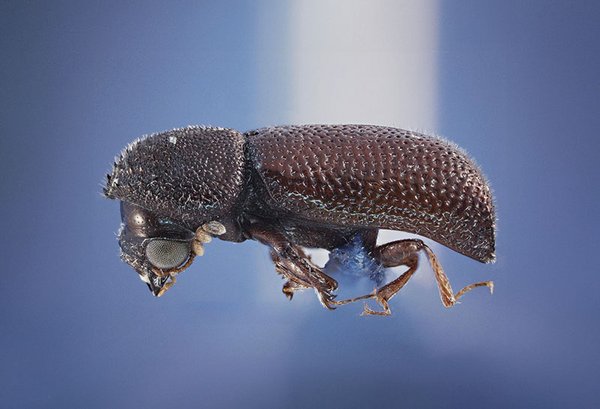


Add a comment
Be the First to Comment